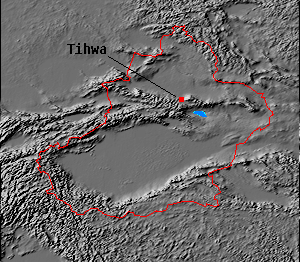![]() The Pacific War Online Encyclopedia
The Pacific War Online Encyclopedia
|
| Previous: Singora | Table of Contents | Next: Siping |

Sinkiang (Xinjiang) is the westernmost province of China incorporating much of the Gobi Desert. The provincial capital is Tihwa (Urumqi), located near the northern branch of the Silk Road on the pass between the Bogda Shan and Tien Shan mountain ranges, which divide the province into the Dzungarian
Basin in the north and the Tarim Basin in the south. The latter
includes the
Taklamakan Desert, a sea of sand dunes where precipitation is all but
nonexistent and temperatures plunge to near freezing throughout the
year.
The economy was based on agriculture centered on the few oasis towns
and at higher, moister elevations. Wheat, fruits, and silk were the
chief products.The region also has rich mineral resources, but these
were just beginning to be exploited in 1941, production being limited to
evaporites (such as borax), precious minerals (such as gold and jade), tungsten in the Hami district, and coal for local consumption. Oil production did not begin until well after the time frame of the Pacific War.
The area was far beyond the reach of the Japanese, but some military supplies reached China from Russia across the old Silk Road. This dried up following the start of the war in Europe in 1939. The local warlord, Sheng Shih-tsai (Sheng Shicai), was essentially a puppet of the Russians until March 1944, when the Kuomintang claim that Mongolian troops raided Sinkiang province under Russian air cover. The Russians then set up the Second East Turkistan Republic, which lasted until 1949 and the victory of the Communists in the Chinese Civil War.
References
Mitter (2013)
The Pacific War Online Encyclopedia © 2011, 2015 by Kent G. Budge. Index